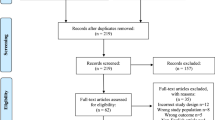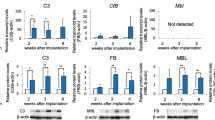Abstract
The purpose of this study was to assess the diagnostic value and potentially protective capacity of heat-shock protein 70 (HSP70) in chronic bacterial prostatitis and chronic prostatitis/chronic pelvic pain syndrome (CP/CPPS). In this study, seminal plasma levels of cytokines (tumor necrosis factor-α (TNF-α) and interleukin 1β (IL-1β)) and HSP70 were evaluated by enzyme-linked immunosorbent assay in 80 men: 15 healthy controls, 16 men with chronic bacterial prostatitis, 23 men with CP/CPPS IIIA and 26 with CP/CPPS IIIB. The HSP70 levels in chronic bacterial prostatitis and CP/CPPS patients were correlated with chronic prostatitis symptom index (CPSI). Significantly increased levels of cytokines (TNF-α and IL-1β) and HSP70 were observed in seminal plasmas from patients with chronic bacterial prostatitis compared with CP/CPPS patients and controls. However, only IL-1β was significantly elevated compared with CP/CPPS IIIB and controls in patients with CP/CPPS IIIA. HSP70 levels in CP/CPPS patients were significantly lower than that in controls. HSP70 concentration in seminal plasma was negatively correlated with CPSI in chronic bacterial prostatitis. The results indicated that HSP70 and IL-1β appear to be the most reliable and predictive surrogate markers to diagnose chronic bacterial prostatitis and CP/CPPS, respectively. HSP70 has an important protective role in the regulation of cell functions in chronic bacterial prostatitis. CP/CPPS would probably be detrimental to the ability of T cells and consequently suppress the expression of HSP70.
This is a preview of subscription content, access via your institution
Access options
Subscribe to this journal
Receive 4 print issues and online access
$259.00 per year
only $64.75 per issue
Buy this article
- Purchase on Springer Link
- Instant access to full article PDF
Prices may be subject to local taxes which are calculated during checkout

Similar content being viewed by others
References
Krieger JN, Riley DE . Bacteria in the chronic prostatitis–chronic pelvic pain syndrome: molecular approaches to critical research questions. J Urol 2002; 167: 2574–2583.
Schaeffer AJ, Landis JR, Knauss JS, Propert KJ, Alexander RB, Litwin MS, et al., Chronic Prostatitis Collaborative Research Network Group. Demographic and clinical characteristics of men with chronic prostatitis: the National Institutes of Health chronic prostatitis cohort study. J Urol 2002; 168: 593–598.
Krieger JN, Nyberg Jr L, Nickel JC . NIH consensus definition and classification of prostatitis. JAMA 1999; 282: 236–237.
Pontari MA, Ruggieri MR . Mechanisms in prostatitis/chronic pelvic pain syndrome. J Urol 2004; 172: 839–845.
Alexander RB, Brady F, Ponniah S . Autoimmune prostatitis: evidence of T cell reactivity with normal prostatic proteins. Urology 1997; 50: 893–899.
Ponniah S, Arah I, Alexander RB . PSA is a candidate self-antigen in autoimmune chronic prostatitis/chronic pelvic pain syndrome. Prostate 2000; 44: 49–54.
Motrich RD, Maccioni M, Riera CM, Rivero VE . Autoimmune prostatitis: state of the art. Scand J Immunol 2007; 66: 217–227.
Rudick CN, Schaeffer AJ, Thumbikat P . Experimental autoimmune prostatitis induces chronic pelvic pain. Am J Physiol Regul Integr Comp Physiol 2008; 294: 1268–1275.
Takayama S, Reed JC, Homma S . Heat-shock proteins as regulator of apoptosis. Oncogene 2003; 22: 9041–9047.
Pockley AG . Heat shock proteins as regulators of the immune response. Lancet 2003; 362: 469–476.
Ranford JC, Henderson B . Chaperonins in disease: mechanisms, models, and treatments. Mol Pathol 2002; 55: 209–213.
Nollen EA, Morimoto RI . Chaperoning signaling pathways: molecular chaperones as stress-sensing heat shock proteins. J Cell Sci 2002; 115: 2809–2816.
Zhang X, Beuron F, Freemont PS . Machinery of protein folding and unfolding. Curr Opin Struct Biol 2002; 12: 231–238.
Hartl FU, Hayer-Hartl M . Molecular chaperones in the cytosol: from nascent chain to folded protein. Science 2002; 295: 1852–1858.
Kojima K, Musch MW, Ropeleski MJ, Boone DL, Ma A, Chang EB . Escherichia coli LPS induces heat shock protein 25 in intestinal epithelial cells through MAP kinase activation. Am J Physiol Gastrointest Liver Physiol 2004; 286: 645–652.
Koets A, Hoek A, Langelaar M, Overdijk M, Santema W, Franken P et al. Mycobacterial 70 kD heat-shock protein is an effective subunit vaccine against bovine paratuberculosis. Vaccine 2006; 24: 2550–2559.
Yeo M, Park HK, Kim DK, Cho SW, Kim YS, Cho SY et al. Restoration of heat shock protein70 suppresses gastric mucosal inducible nitric oxide synthase expression induced by Helicobacter pylori. Proteomics 2004; 4: 3335–3342.
Bao XQ, Liu GT . Induction of overexpression of the 27- and 70-kDa heat shock proteins by bicyclol attenuates concanavalin A-induced liver injury through suppression of nuclear factor-kappaB in mice. Mol Pharmacol 2009; 75: 1180–1188.
Etienne S, Gaborit N, Henrionnet C, Pinzano A, Galois L, Netter P et al. Local induction of heat shock protein 70 (Hsp70) by proteasome inhibition confers chondroprotection during surgically induced osteoarthritis in the rat knee. Biomed Mater Eng 2008; 18: 253–260.
Guo S, Wharton W, Moseley P, Shi H . Heat shock protein 70 regulates cellular redox status by modulating glutathione-related enzyme activities. Cell Stress Chaperones 2007; 12: 245–254.
Zhao Y, Wang W, Qian L . Hsp70 may protect cardiomyocytes from stress-induced injury by inhibiting Fas-mediated apoptosis. Cell Stress Chaperones 2007; 12: 83–95.
Singleton KD, Wischmeyer PE . Glutamine's protection against sepsis and lung injury is dependent on heat shock protein 70 expression. Am J Physiol Regul Integr Comp Physiol 2007; 292: 1839–1845.
Bierklund JTE, Weidner W . Understanding chronic pelvic pain syndrome. Curr Opin Urol 2002; 12: 63–67.
Motrich RD, Maccioni M, Molina R, Tissera A, Olmedo J, Riera CM et al. Reduced semen quality in chronic prostatitis patients that have cellular autoimmune response to prostate antigens. Hum Reprod 2005; 20: 2567–2572.
Batstone GR, Doble A, Gaston JS . Autoimmune T cell responses to seminal plasma in chronic Pelvic pain syndrome (CPPS). Clin Exp Immunol 2002; 128: 302–307.
Ponniah S, Arah I, Alexander RB . PSA is a candidate self-antigen in autoimmune chronic prostatitis/chronic pelvic pain syndrome. Prostate 2000; 44: 49–54.
Yu J, Bao E, Yan J, Lei L . Expression and localization of Hsps in the heart and blood vessel of heat-stressed broilers. Cell Stress Chaperones 2008; 13: 327–335.
Torigoe Y, Takahashi N, Hara M, Yoshimatsu H, Saikawa T . Adrenomedullin improves cardiac expression of heat-shock protein 72 and tolerance against ischemia/reperfusion injury in insulin-resistant rats. Endocrinology 2009; 150: 1450–1455.
Bromberg Z, Raj N, Goloubinoff P, Deutschman CS, Weiss YG . Enhanced expression of 70-kilodalton heat shock protein limits cell division in a sepsis-induced model of acute respiratory distress syndrome. Crit Care Med 2008; 36: 246–255.
Toth B, Alexander M, Daniel T, Chaudry IH, Hubbard WJ, Schwacha MG . The role of gammadelta T cells in the regulation of neutrophil-mediated tissue damage after thermal injury. J Leukoc Biol 2004; 76: 545–552.
Sung YY, Pineda C, MacRae TH, Sorgeloos P, Bossier P . Exposure of gnotobiotic Artemia franciscana larvae to abiotic stress promotes heat shock protein 70 synthesis and enhances resistance to pathogenic Vibrio campbellii. Cell Stress Chaperones 2008; 13: 59–66.
Nickerson M, Elphick GF, Campisi J, Greenwood BN, Fleshner M . Physical activity alters the brain Hsp70 and IL-1b responses to peripheral E. coli challenge. Am J Physiol Regul Integr Comp Physiol 2005; 289: 1665–1674.
Musch MW, Petrof EO, Kojima K, Ren H, Mckay DM, Chang EB . Bacterial superantigen-treated intestinal epithelial cells upregulate heat shock proteins 25 and 72 and are resistant to oxidant cytotoxicity. Infect Immun 2004; 72: 3187–3194.
Tao Y, Drabik KA, Waypa TS, Musch MW, Alverdy JC, Schneewind O et al. Soluble factors from Lactobacillus GG activate MAPKs and induce cytoprotective heat shock proteins in intestinal epithelial cells. Am J Physiol Cell Physiol 2006; 290: 1018–1030.
Petrof EO, Musch MW, Ciancio M, Sun J, Hobert ME, Claud EC et al. Flagellin is required for salmonella-induced expression of heat shock protein Hsp25 in intestinal epithelium. Am J Physiol Gastrointest Liver Physiol 2008; 294: 808–818.
Nagasawa H, Hisaeda H, Maekawa Y, Fujioka H, Ito Y, Aikawa M et al. Gamma delta T cells play a crucial role in the expression of 65 000MW heat-shock protein in mice immunized with Toxoplasma antigen. Immunology 1994; 83: 347–352.
Hirsh MI, Junger WG . Roles of heat shock proteins and gamma delta T cells in inflammation. Am J Respir Cell Mol Biol 2008; 39: 509–513.
Khan MN, Shukla D, Bansal A, Mustoori S, Ilavazhagan G . Immunogenicity and protective efficacy of GroEL(hsp60) of Streptococcus pneumoniae against lethal infection in mice. FEMS Immunol Med Microbiol 2009; 56: 56–62.
Acknowledgements
We thank Doctor Jian Bai of the Department of Urology, Tongji Hospital, Tongji Medical College, Huazhong University of Science & Technology for his assistance in writing and preparing this paper.
Author information
Authors and Affiliations
Corresponding author
Ethics declarations
Competing interests
The authors declare no conflict of interest.
Rights and permissions
About this article
Cite this article
Guo, H., Xu, YM., Ye, ZQ. et al. Heat-shock protein 70 expression in the seminal plasma of patients with chronic bacterial prostatitis and chronic prostatitis/chronic pelvic pain syndrome. Prostate Cancer Prostatic Dis 13, 338–342 (2010). https://doi.org/10.1038/pcan.2010.22
Received:
Accepted:
Published:
Issue Date:
DOI: https://doi.org/10.1038/pcan.2010.22
Keywords
This article is cited by
-
Overview of seminal fluid biomarkers for the evaluation of chronic prostatitis: a scoping review
Prostate Cancer and Prostatic Diseases (2022)
-
Experimental autoimmune prostatitis: different antigens induction and antigen-specific therapy
International Urology and Nephrology (2021)
-
Zytokine im Ejakulat
Der Urologe (2013)



